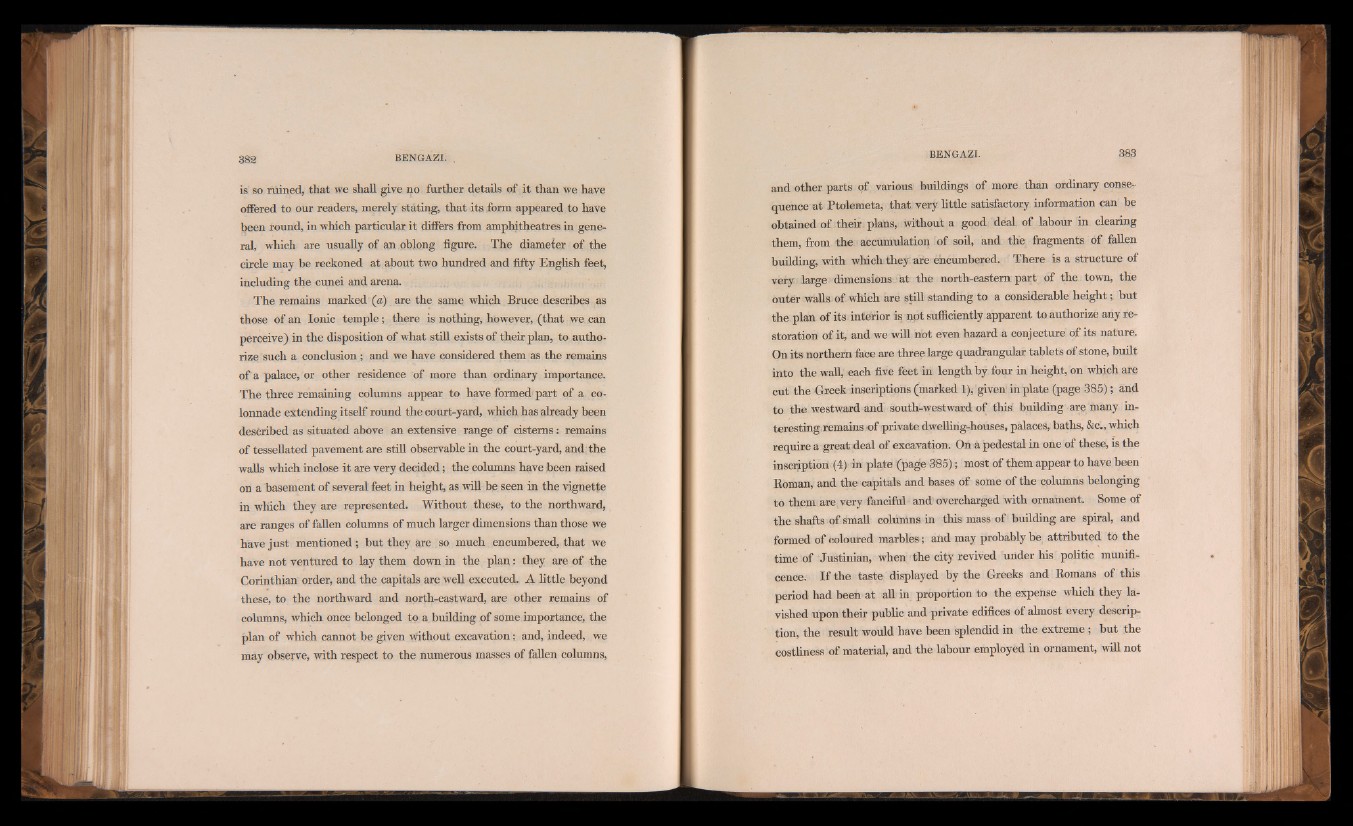
is so ruined, that we shall give no further details of it than we have
oifered to our readers, merely stating, that its form appeared to have
been round, in which particular it differs from amphitheatres in general,
which are usually of an oblong figure. The diameier of the
circle may be reckoned at about two hundred and fifty English feet,
including the cunei and arena.
The remains marked (as) are the same which Bruce describes as
those of an Ionic temple; there is nothing, however, (that we can
perceive) in the disposition of what still exists of their plan, to authorize
such a conclusion ; and we have considered them as the remains
of a palace, or other residence of more than ordinary importance.
The three remaining columns appear to have formed'part of a colonnade
extending itself round the court-yard, which has already been
described as situated above an extensive range of cisterns: remains
of tessellated pavement are still observable in the court-yard, and: the
walls which inclose it are very decided; the columns have been raised
on a basement of several feet in height, as will be seen in the vignette
in which they are represented. Without these, to the northward,
are ranges of fallen columns of much larger dimensions than those we
have just mentioned; but they are so much encumbered, that we
have not ventured to lay them down in the plan: they are of the
Corinthian order, and the capitals are well executed. A little beyond
these, to the northward and north-eastward, are other remains of
columns, which once belonged to a building of some importance, the
plan of which cannot be given without excavation; and, indeed, we
may observe, with respect to the numerous masses of fallen columns,
and other parts of various buildings of more than ordinary consequence
at Ptolemeta, that, very little satisfactory information can be
obtained of their, plans, without a good deal, of labour in clearing
them, from the accumulation of soil, and the fragments of fallen
building, with which they are encumbered. There is a structure of
very large dimensions at the north-eastern part of the town, the
outer walls of which are still standing to a considerable height; but
the plan of its interior is upt suificiently apparent to authorize any restoration
of it, and we will not even hazard a conjecture of its nature.
On its northern face are three large quadrangular tablets of stone, built
into the wall, each five feet in length by four in height, on which are
cut the Greek inscriptions (marked 1), given in plate (page 385); and
to the westward and south-westward of this building are many interesting
.remains -of private dwelling-houses, palaces, baths, &c., which
require a great deal of excavation. On a pedestal in one of these, is the
inscription. (4) in plate (page 385); most of them appear to have been
Homan, and the> capitals and bases of some of the cplumns belonging
to ttipm are very fanciful - and overcharged with ornament. Some of
the shafts of small columns in this mass of building are spiral, and
formed of coloured marbles; and may probably be attributed to the
time of Justinian, when the city revived under his politic munificence.
If the taste displayed by the Greeks and Romans of this
period had been at all in proportion to the expense which they lavished
upon their public and private edifices of almost every description,
the result would have been splendid in the extreme ; but the
costliness of material, and the labour employed in ornament, will not